Amulet and ring found in Shropshire declared treasure
- Published
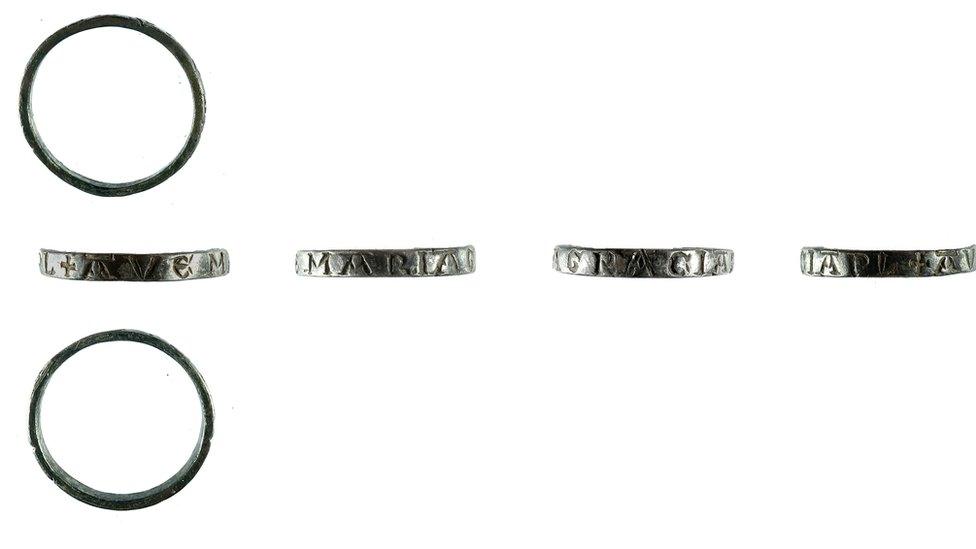
The inscription on the silver ring translates as 'Hail Mary full of grace'
A Roman amulet and medieval ring found by metal detectorists have been declared as treasure.
The items, which date 1,000 years apart, were both discovered in Shropshire.
The county's finds liaison officer Peter Reavill said both artefacts "would have offered their original owners divine protection".
Shropshire Museums have expressed an interest in acquiring the finds following inquests heard in Shrewsbury.
The gold amulet - a piece of jewellery - is the second found in the county and was uncovered in Condover, Shropshire, by Laura Woods in September 2019.

The amulet is likely to have held cut glass or stone
Squashed flat and missing one terminal, it is likely to have held cut glass or stone.
Mr Reavill said amulets like this one, which has been dated from around 200 to 400 AD, are thought to be "good luck charms offering personal protection through magic or religion during the Roman period".
"Some examples from the continent suggest these charms offer protection during childbirth," he said.
The ring, which dates from the 1400s, is made from silver and inscribed with the words 'Ave Maria Gracia Plena', which translates as 'Hail Mary full of grace'.
The letters would have originally been inlaid with silver oxide, which would have appeared black.
It was found by Mark Davies near Craven Arms, Shropshire, and its reporting was filmed by the BBC's The One Show last summer, said Mr Reavill.
"This devotional prayer displayed on the outside of the ring is thought to have been both a display of the wearer's faith as well as bringing the wearer a form of protection," he added.

Follow BBC West Midlands on Facebook, external, Twitter, external and Instagram, external. Send your story ideas to: newsonline.westmidlands@bbc.co.uk , external
- Published29 April 2020
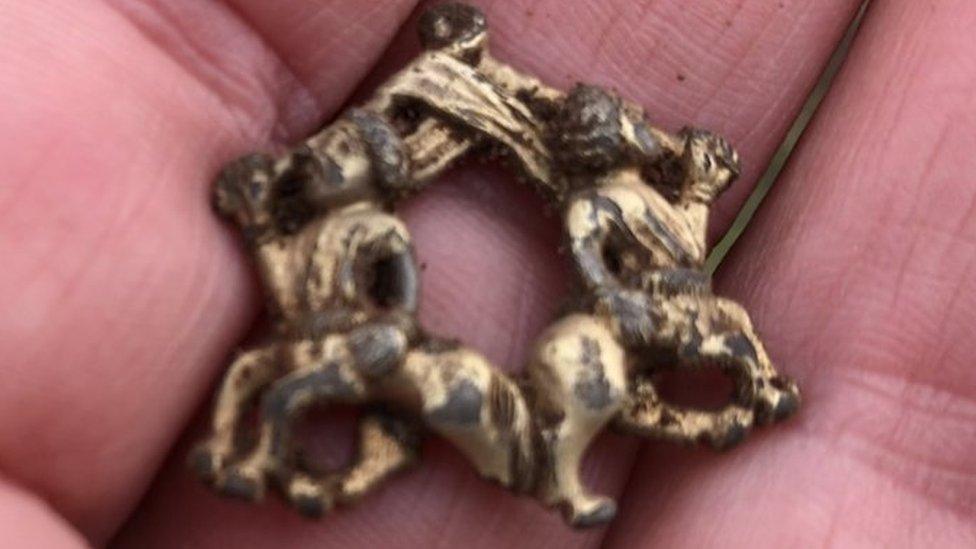
- Published5 March 2020
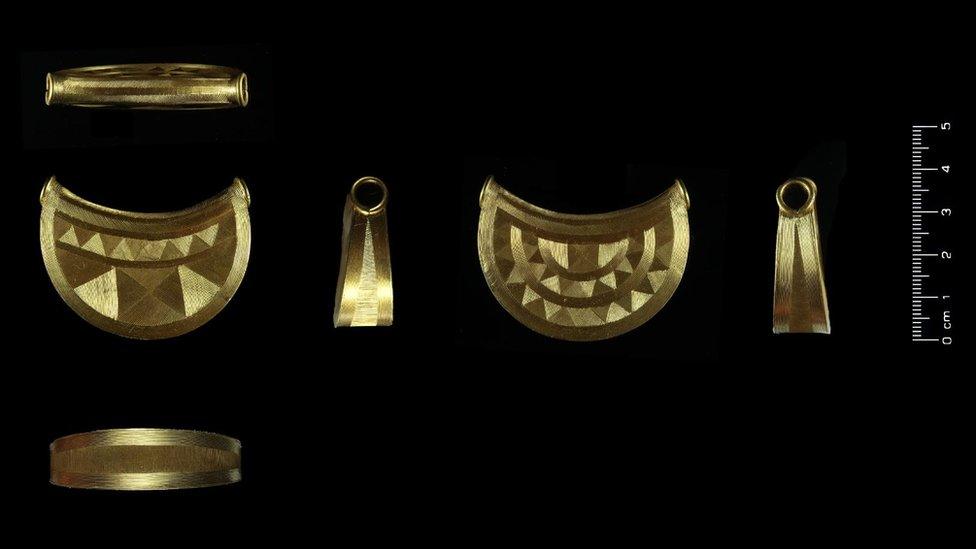
- Published27 February 2020
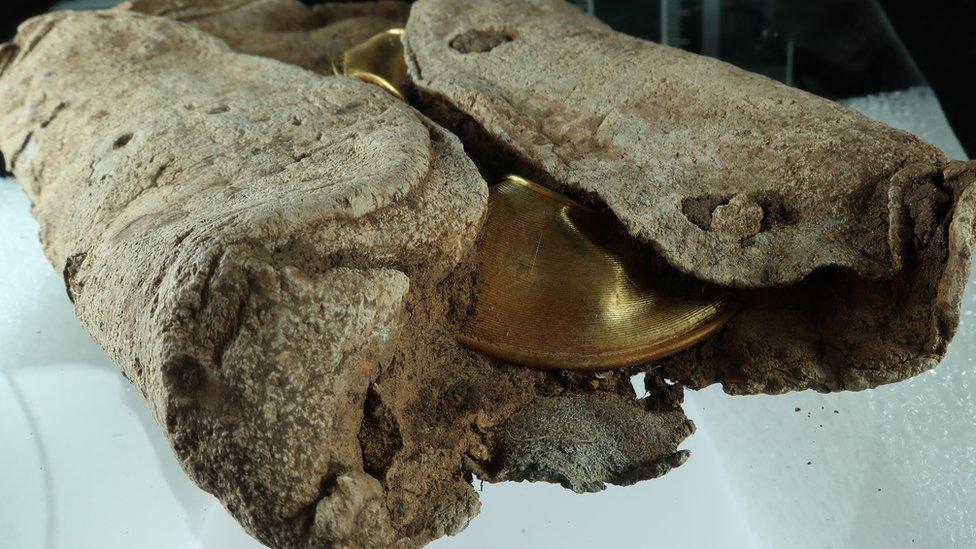
- Published4 September 2019
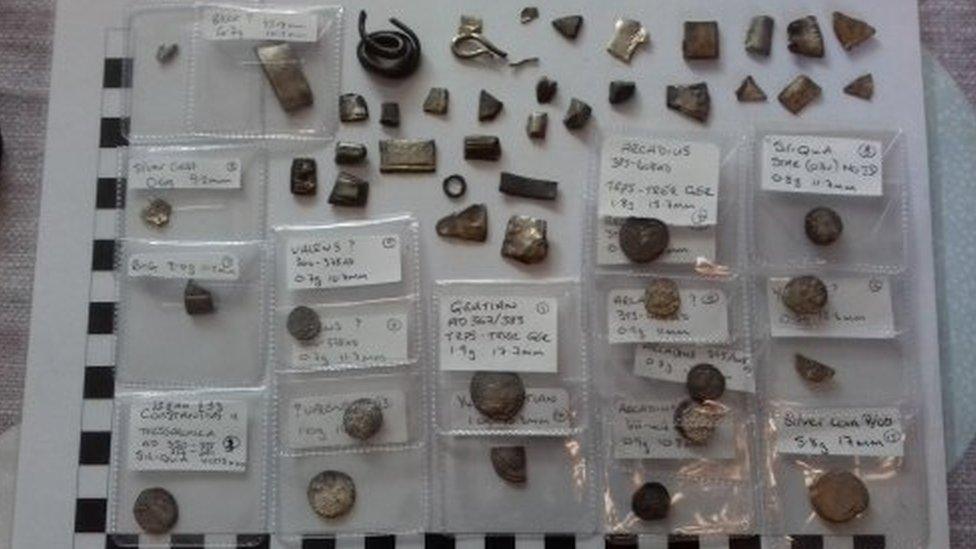
- Published7 August 2019
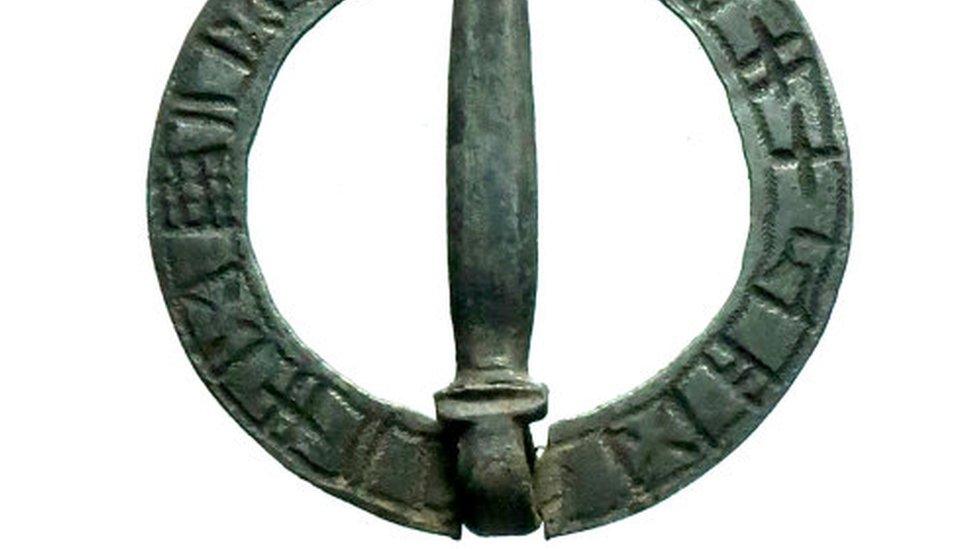
- Published20 April 2017
